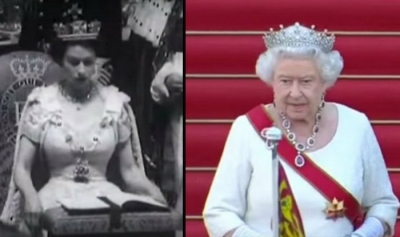
Queen Elizabeth II was the first British sovereign to celebrate the Platinum Jubilee (70 years of service) recently. She is currently the world’s longest reigning monarch, having ascended the throne on February 6, 1952. However, the Queen still has some way to go to achieve the longest recorded reign-that of Louis XIV of France, also known as Louis the Great. Louis XIV was King of France for 72 years and 110 days, from 1643 to until his demise in 1715.
Elizabeth I – the last Tudor monarch – was born at Greenwich on 7 September 1533, the daughter of Henry VIII and his second wife, Anne Boleyn. Her early life was full of uncertainties, and her chances of succeeding to the throne seemed very slight once her half-brother Edward was born in 1537. She was then third in line behind her Roman Catholic half-sister, Princess Mary. Roman Catholics, indeed, always considered her illegitimate and she only narrowly escaped execution in the wake of a failed rebellion against Queen Mary in 1554.
Elizabeth succeeded to the throne on her half-sister’s death in November 1558. She was very well-educated (fluent in five languages), and had inherited intelligence, determination and shrewdness from both parents. Her 45-year reign is generally considered one of the most glorious in English history. During it a secure Church of England was established. Its doctrines were laid down in the 39 Articles of 1563, a compromise between Roman Catholicism and Protestantism. Elizabeth herself refused to ‘make windows into men’s souls … there is only one Jesus Christ and all the rest is a dispute over trifles’; she asked for outward uniformity. Most of her subjects accepted the compromise as the basis of their faith, and her church settlement probably saved England from religious wars like those which France suffered in the second half of the 16th century.
Although autocratic and capricious, Elizabeth had astute political judgement and chose her ministers well; these included William Cecil, later Lord Burghley (Secretary of State), Sir Christopher Hatton (Lord Chancellor) and Sir Francis Walsingham (in charge of intelligence and also a Secretary of State).
Overall, Elizabeth’s administration consisted of some 600 officials administering the great offices of state, and a similar number dealing with the Crown lands (which funded the administrative costs). Social and economic regulation and law and order remained in the hands of the sheriffs at local level, supported by unpaid justices of the peace.
Elizabeth’s reign was one of considerable danger and difficulty for many, with threats of invasion from Spain through Ireland, and from France through Scotland. Much of northern England was in rebellion in 1569-70. A papal bull of 1570 specifically released Elizabeth’s subjects from their allegiance, and she passed harsh laws against Roman Catholics after plots against her life were discovered.
As a likely successor to Elizabeth, Mary spent 19 years as Elizabeth’s prisoner because Mary was the focus for rebellion and possible assassination plots, such as the Babington Plot of 1586.
During Elizabeth’s long reign, the nation also suffered from high prices and severe economic depression, especially in the countryside, during the 1590s. The war against Spain was not very successful after the Armada had been beaten and, together with other campaigns, it was very costly.
Despite the combination of financial strains and prolonged war after 1588, Parliament was not summoned more often. There were only 16 sittings of the Commons during Elizabeth’s reign, five of which were in the period 1588-1601. Although Elizabeth freely used her power to veto legislation, she avoided confrontation and did not attempt to define Parliament’s constitutional position and rights.
Overall, Elizabeth’s always shrewd and, when necessary, decisive leadership brought successes during a period of great danger both at home and abroad. She died at Richmond Palace on 24 March 1603, having become a legend in her lifetime. The date of her accession was a national holiday for two hundred years.
Credit : ROYAL.UK
Picture Credit : Google




